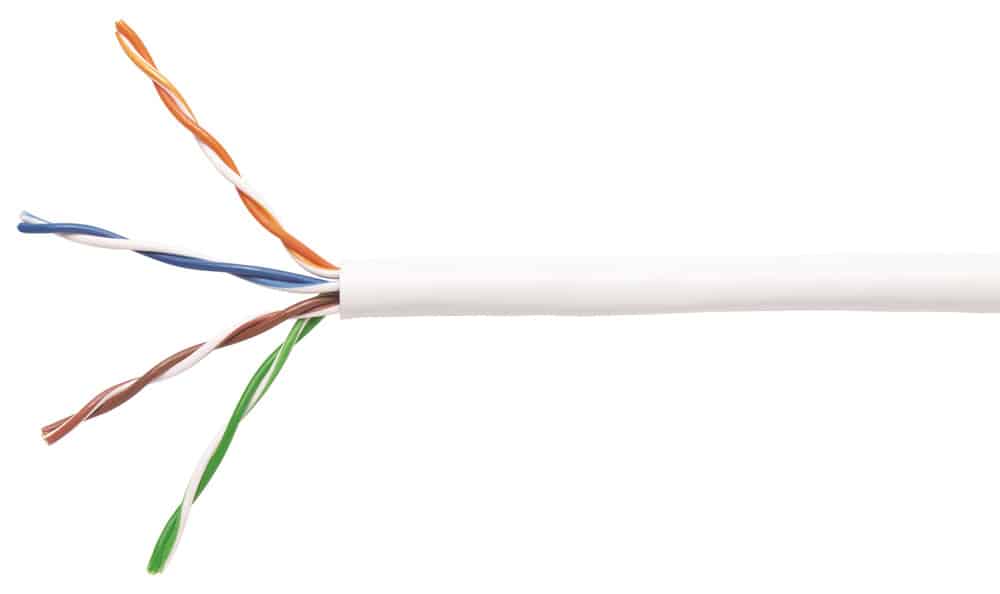Welcome to a journey through the annals of networking technology, where we spotlight the often overlooked yet historically significant Cat 4 cable. In this exploration, we’ll delve into the world of Category 4 Cabling – an emblem of technological transition and a key player in the evolution of network infrastructure. From its technical specifications to its role in setting the stage for future advancements, we unravel the story of Cat 4 cable, a cornerstone in the foundation of modern networking. Join us as we uncover the characteristics that made Cat 4 cable a stepping stone in the path to high-speed data communication.
Table of Contents:
- What is Cat 4 Cabling?
- Historical Context
- Comparison with Other Categories
- Legacy and Phasing Out
- Conclusion
- References

1. What is Cat 4 Cabling?
Cat 4 or Category 4 Cabling was a standard in network wiring that emerged as a progression from its predecessor, Cat 3. It is the fourth-lowest grade of unshielded twisted-pair (UTP) cabling. Category 4 cabling was designed to support digital voice and data communication at speeds up to 16 Mbps.
It uses 22-gauge or 24-gauge copper wires in a configuration of four twisted-pairs enclosed in a protective insulating sheath. Category 4 cabling can support standard 10BaseT types of Ethernet networks. It was also commonly used in older 16-Mbps Token Ring installations.
Category 4 Cabling Characteristics
The following table summarizes the electrical characteristics of category 4 cabling at different frequencies, which correspond to different data transmission speeds. Note that attenuation increases with frequency, while near-end crosstalk (NEXT) decreases.

| Characteristic | Value at 10 MHz | Value at 20 MHz |
| Attenuation | 20 decibels/1000 feet | 31 decibels/1000 feet |
| NEXT | 41 decibels/1000 feet | 36 decibels/1000 feet |
| Resistance | 28.6 ohms/1000 feet | 28.6 ohms/1000 feet |
| Impedance | 100 ohms (± 15%) | 100 ohms (± 15%) |
| Capacitance | 18 pF/feet | 18 pF/feet |
Source: ANSI-TIA-EIA 568-B – Commercial Building Telecommunications Cabling Standard
The technical specifications of Cat 4 cable included:
- Bandwidth Capacity: Cat 4 cable boasted a bandwidth capacity of up to 20 MHz. While this was a significant improvement over Cat 3’s 16 MHz, it was still modest by today’s standards.
- Data Transfer Rates: This type of cabling was capable of supporting data transfer rates of up to 16 Mbps (megabits per second). This made it suitable for Token Ring networks, which were prevalent at the time of its introduction.
- Typical Uses: Primarily, Cat 4 cable found its use in telephone and Token Ring networks. Token Ring was a common LAN (Local Area Network) technology that required a more robust cabling standard like Cat 4 for optimal performance.
However, the advent of faster Ethernet standards and the subsequent introduction of Cat 5 cabling soon overshadowed Cat 4. Its inability to adequately support the emerging 100 Mbps Fast Ethernet eventually led to its decline and replacement in most network applications. Despite this, understanding Cat 4 cabling is crucial as it marks an important phase in the evolution of networking technologies, bridging the gap between voice-grade cabling and the higher-speed requirements of advanced data networks.
2. Historical Context
Rewinding to the era of Cat 4 cable’s introduction, we find ourselves in the early 1990s, a pivotal period in the development of network technology. This was a time when local area networks (LANs) were becoming increasingly commonplace in business environments, and the demand for faster data transmission was on the rise.
During this period, networking was primarily dominated by two technologies: Ethernet and Token Ring. Token Ring, in particular, benefited significantly from the advent of Cat 4 cabling. With its higher bandwidth capacity of 20 MHz, Cat 4 was well-suited to support the 16 Mbps speed of Token Ring networks, which was a considerable step up from the 10 Mbps offered by the then-standard Ethernet over Cat 3 cabling.
However, Cat 4 cable’s reign was relatively short-lived. The rapid evolution of Ethernet technology, particularly with the introduction of 100 Mbps Fast Ethernet, soon outpaced the capabilities of Cat 4. This era was marked by rapid technological advancements and shifting networking standards, setting the stage for the development of more advanced cabling solutions capable of supporting the burgeoning speeds and bandwidth demands of modern networks.
3. Comparison with Other Categories
When examining the landscape of network cabling, it’s essential to understand where Cat 4 cable fits in relation to its predecessors and successors.
- Cat 3 vs. Cat 4: Cat 3 cable was the standard for telephone wiring and early networking, supporting up to 10 Mbps (Ethernet) and a bandwidth of 16 MHz. Cat 4 was a step up, designed to support higher speeds of up to 16 Mbps (Token Ring) and a bandwidth of 20 MHz. This made Cat 4 more suitable for advanced, higher-speed network environments than Cat 3.
- Cat 4 vs. Cat 5: The emergence of Cat 5 cabling was a significant leap forward. Cat 5 offered a bandwidth of 100 MHz, quintupling the capacity of Cat 4. This made it capable of supporting the then-new 100 Mbps Fast Ethernet, as well as other technologies like ATM (Asynchronous Transfer Mode). The superior performance of Cat 5 in terms of both speed and bandwidth quickly rendered Cat 4 obsolete for new network installations.
In summary, Cat 4 served as a transitional standard, bridging the gap between the lower-speed capabilities of Cat 3 and the higher demands that would be met by Cat 5. Its introduction was a crucial step in the evolution of network cabling, paving the way for the high-speed, high-bandwidth capabilities we rely on in today’s network infrastructures.
4. Legacy and Phasing Out
The story of Cat 4 cable is a classic tale of technological advancement and eventual obsolescence. Cat 4 was phased out primarily due to the rapid evolution of network technologies that demanded even higher speeds and bandwidth than what Cat 4 could offer. The emergence of 100 Mbps Fast Ethernet was a critical turning point. Cat 5 cable, with its ability to support this higher speed and a bandwidth of 100 MHz, quickly became the new standard, overshadowing Cat 4.
The legacy of Cat 4 lies in its role as a bridge between the early days of network cabling and the more advanced, high-speed solutions that followed. It was a stepping stone that demonstrated the need and potential for faster data transmission in networking environments. The transition from Cat 4 to Cat 5 and beyond signifies the constant evolution of technology, where each advancement lays the groundwork for the next generation of innovation.
5. Conclusion
While Cat 4 cable may no longer be in use, understanding its role and the context of its emergence provides valuable insights into the evolutionary nature of networking technology. It reminds us that each step, no matter how seemingly small, contributes to the larger progress in the field. The story of Cat 4 cable is a testament to the relentless pursuit of faster, more efficient ways to transmit data, a pursuit that continues to drive the development of new and advanced networking technologies.
6. References
- “Data and Computer Communications” by William Stallings.
- “Networking Essentials” by Jeffrey S. Beasley and Piyasat Nilkaew.
- RFC 1180 – A TCP/IP Tutorial.
- “The Essential Guide to Telecommunications” by Annabel Z. Dodd.
- “Network Cabling Handbook” by Chris Clark.